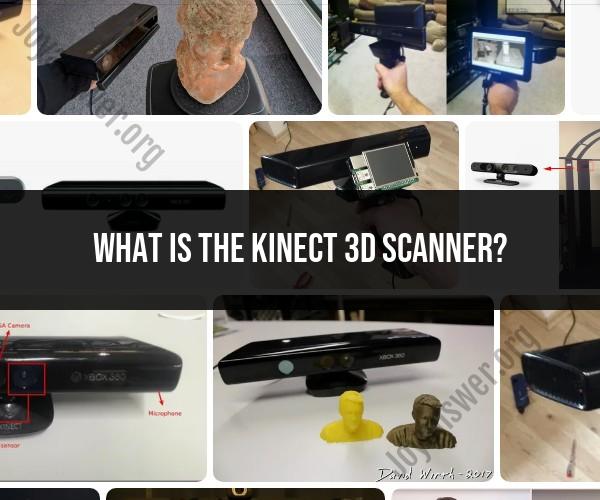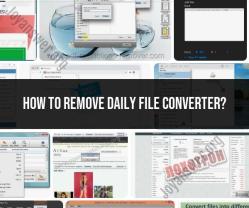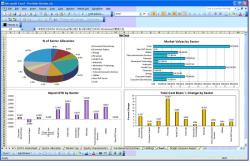What is the Kinect 3D scanner?
The Kinect 3D scanner refers to the use of Microsoft's Kinect sensor technology, primarily designed for gaming and motion sensing on the Xbox gaming console, for 3D scanning purposes. The Kinect sensor, which includes both a depth-sensing camera and a traditional RGB camera, has found applications beyond gaming and entertainment due to its capability to capture depth information and create 3D representations of objects and environments. Here are some key features and uses of the Kinect 3D scanner:
Key Features:
Depth Sensing: The Kinect sensor uses a technology called time-of-flight (ToF) or structured light to measure the depth of objects in its field of view accurately. This depth information allows it to create 3D models.
RGB Camera: In addition to depth sensing, the Kinect includes a standard RGB camera, which captures color information. Combining color data with depth data enhances the realism of 3D scans.
Infrared Sensors: The Kinect sensor includes infrared sensors, which are essential for depth measurement. These sensors emit infrared light and measure the time it takes for the light to bounce off objects and return to the sensor.
Microphone Array: Some versions of the Kinect have a built-in microphone array, which can be used for voice recognition and other audio-related applications.
Uses of the Kinect 3D Scanner:
3D Scanning: The primary use of the Kinect 3D scanner is to capture 3D models of physical objects or environments. This has applications in fields like 3D printing, video game development, virtual reality, and augmented reality.
Motion Capture: The Kinect's depth-sensing technology is widely used in motion capture systems for animation and gaming. It can track the movements of a person or object in real-time, making it valuable in the entertainment industry.
Medical Imaging: Kinect-based 3D scanning has been explored in the medical field for applications such as body measurements, prosthetic design, and physical therapy.
Augmented Reality (AR): Developers have used the Kinect to create AR applications that overlay digital objects onto the real world in real-time, enhancing user experiences in various contexts.
Robotics: In robotics, the Kinect sensor can be used for environment perception and obstacle avoidance.
Education: The Kinect has found applications in education for interactive learning experiences and 3D modeling projects.
Accessibility: Kinect technology has been used to create assistive devices for individuals with disabilities, such as gesture-based control systems for computers and wheelchairs.
It's worth noting that while the Kinect was initially popular for these applications, Microsoft discontinued the production of the Kinect sensor in 2017. However, the technology it pioneered has influenced the development of other depth-sensing and 3D scanning devices and systems. Various software tools and libraries are available that allow developers to work with Kinect-like functionality using other depth-sensing cameras and sensors.
Kinect 3D Scanner: Unveiling the Technology Behind 3D Scanning
The Kinect 3D scanner is a device that uses infrared light and sensors to create 3D models of objects. It was originally developed by Microsoft for use with the Xbox 360 and Xbox One video game consoles, but it has also been used for a variety of other applications, including 3D scanning.
The Kinect 3D scanner works by projecting a grid of infrared light onto an object. The sensors in the Kinect then detect the reflected light and use this information to calculate the distance to each point on the object. This information is then used to create a 3D point cloud of the object.
Scanning in Three Dimensions: Understanding the Kinect 3D Scanner
To scan an object with the Kinect 3D scanner, you simply need to place the object in front of the Kinect and move the Kinect around the object. The Kinect will then capture a series of scans from different angles. Once the scan is complete, the Kinect will stitch the scans together to create a complete 3D model of the object.
The Kinect 3D scanner can be used to scan a wide variety of objects, including people, animals, objects, and even scenes. The quality of the scan will depend on a number of factors, such as the size and complexity of the object, the distance between the object and the Kinect, and the lighting conditions.
Kinect for 3D Scanning: Exploring the Capabilities of the Device
The Kinect 3D scanner is a powerful tool that can be used for a variety of applications, including:
- 3D printing: The Kinect 3D scanner can be used to create 3D models of objects that can then be printed on a 3D printer.
- Video games: The Kinect 3D scanner can be used to create 3D models of players and objects that can then be used in video games.
- Medical imaging: The Kinect 3D scanner can be used to create 3D models of patients' bodies for medical imaging applications.
- Product design: The Kinect 3D scanner can be used to create 3D models of products that can then be used for product design and development.
The Kinect 3D scanner is a versatile and affordable device that can be used for a wide variety of applications. It is a valuable tool for hobbyists, professionals, and businesses alike.
Here are some additional things to keep in mind about the Kinect 3D scanner:
- The Kinect 3D scanner is no longer manufactured by Microsoft, but it is still available for purchase from third-party retailers.
- The Kinect 3D scanner requires a computer with Windows 7 or later installed.
- There are a number of different software programs available that can be used with the Kinect 3D scanner. Some of these programs are free, while others require a purchase.
- The Kinect 3D scanner is not as accurate as some other 3D scanners, but it is a good option for hobbyists and those on a budget.
If you are interested in learning more about the Kinect 3D scanner, there are a number of resources available online and in libraries.













